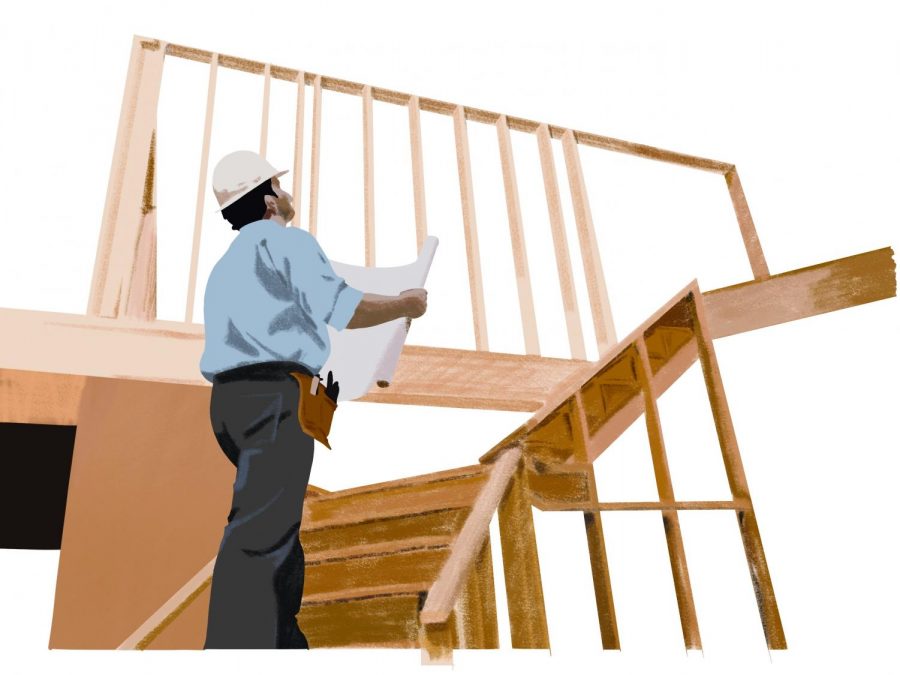San Diego is currently in the midst of a housing situation that can only be described as a crisis. This crisis is made up of two parts: the rise and continuation of sprawl, and a vast shortage of units.
The main problem is urban sprawl. It’s been detrimental to San Diego because it increases reliance upon cars in lieu of public transit and other sustainable forms of transportation, which conversely leads to public health concerns. One of these concerns is the lack of walkability, which leads to an increase in obesity among the citizens of the city in question.
According to a 2004 study in the American Journal of Public Health, “for each 1-point rise in the urban sprawl index (0–100 scale), the risk for being overweight increased by 0.2% and the risk for being obese increased by 0.5%.”
Another downside of urban sprawl is the increase in carbon emissions that results from the aforementioned increased reliance upon cars.
Urban sprawl is significantly more expensive to maintain compared to the denser counterparts. One 2018 study by the New Climate Economy found that policies of in-fill and other methods of increasing city density could lead to a savings of $17 trillion. The same study found that the more people you have per square kilometer in an urban area, the more CO2 emissions go down on a per capita basis.
The second main problem contributing to San Diego’s ongoing housing crisis is the shortage of housing supply. As was recently pointed out in the Voice of San Diego, “Since 1950, new housing has represented an average of 3 percent of our region’s housing stock in a given year. That number has been in decline for years, but has since bottomed out at its current rate below 1 percent.”
In other words, we are short on housing because less housing is being built.
Other cities have experienced this issue, and it is one that is likely to become more universal in the coming years. The United Nations recently projected that by the year 2050, 68% of the world will be living in urban areas. For a solution on this problem, we should look to our allies across the Atlantic.
When the Japanese saw their own housing shortage in the early 2010s, they deregulated urban zoning requirements. This move resulted in a massive surge in housing permits issued in the city, as outlined in an illuminating piece in the Financial Times. In 2014, Tokyo issued permits for 142,417 new housing units, nearly doubling the total of the entire state of California, with 83,657. It should also be noted that Tokyo doubled their housing output of California despite having only one third of California’s population.
To solve San Diego’s housing crisis, one must understand the simple rules of supply and demand because housing follows the same market incentivizations as any other good. If we want more housing, we must incentivize the creation of more housing. If we don’t want to have a massive, bloated city, then housing should be constructed as densely as possible, for both public health and environmental reasons.
Californians had an opportunity to take a small step in the pro-housing direction with the recently failed Senate Bill 50. SB50 would have eased zoning regulations, particularly in a way that was less partial to the continued construction of single-family housing in lieu of apartments and duplexes.
The bill was defeated by state senate members who fell for the foolish and ill-informed premises of Not In My Backyard, or NIMBY, activists, who seek to selfishly stymy the development of multi-family housing. These grassroots actors claim to be motivated by an intent to “preserve the character” of the neighborhoods — a foolish premise based on the idea that more market-rate housing being available to working people and families should be prevented in the name of an outdated ideal of everyone living in single-family residencies surrounded by a white-picket fence and front yard.
The further liberalization of the San Diego housing market vis-a-vis deregulatory zoning reforms meant to incentivize the construction of more, denser and affordable housing would be a massive boon to students living off campus. If College Area and the communities surrounding San Diego State reformed zoning laws in a way that allowed for the construction of more apartments and multi-family dwelling, Aztecs would all be better off, less strapped for cash and able to live closer to school.
Dylan Meisner is a sophomore studying political science and international security and conflict resolutions. Follow him on Twitter @DylMeisner.








